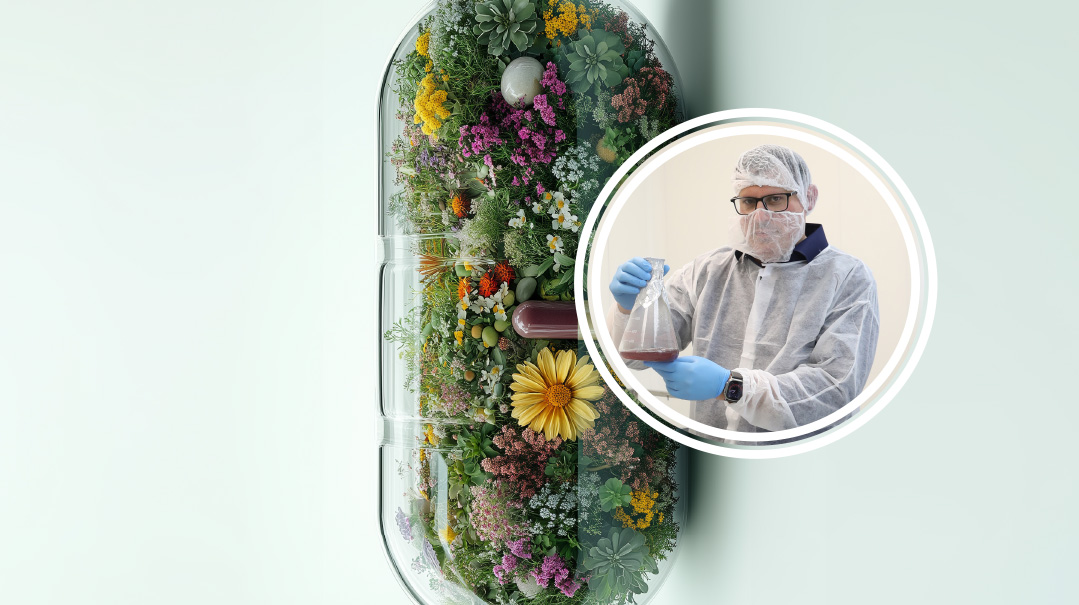Hidden Harvest

Bioharvest CEO Ilan Sobel has unlocked his best secret from inside some fruity fiber — a spigot to the fountain of youth

Photos: Avi Kantob
He went from being a senior executive for Coca Cola to discovering the hidden natural gifts embedded in our fruits and vegetables. Today, Bioharvest CEO Ilan Sobel has unlocked his best secret from inside some fruity fiber – a spigot to the fountain of youth
The only thing better than working with what you love is believing that the work you’re doing can make the world a better place. Bioharvest Sciences CEO Ilan Sobel says he’s fortunate to have found both when he invested in Bioharvest Sciences back in 2020. “Sometimes,” he said, “G-d shows you a keyhole. And it’s up to you to find the key and push that door wide open.”
Bioharvest Sciences is an Israeli startup biotech company that has figured out how to harness the health-boosting properties hidden inside plants and their fruits. Its technology isolates their active and beneficial compounds in fruits and plants, and reproduces them at an industrial scale without having to grow the plant themselves.
“I always say to people who are non-believers, take a look at the secrets in G-d’s creation and tell me you still don’t believe,” Ilan says. “G-d gave us 500,000 plants on Day Three of creation. And today, the world utilizes, literally, a fraction of those plants. There are secrets hidden there, and it’s our challenge as mankind to be able to find the right way to unlock the secrets in those plants.”
Home at Last
After hearing Ilan rhapsodize about the powers of the plant world, it comes as a surprise to hear about his previous work experience. His résumé doesn’t quite read like that of a plant enthusiast. Ilan has lived in Shanghai and Bangkok, where he worked as the senior executive for the Coca-Cola Company for 18 years. Those years helped him understand how to build brands with an international imprint. Then Ilan moved with his wife Gabi and three young kids to Manhattan’s Upper West Side, where he worked for the Coca-Cola Company, and was senior vice president and general manager of the Glaceau Business Unit, manufacturing and marketing Vitaminwater and Smartwater.
He saw success in Asia and the Big Apple, but something was missing. Corporate America was rewarding but it wasn’t fulfilling — not in the way he and Gabi were searching for. And so in 2014, the couple and their children said goodbye to Coca-Cola, Vitaminwater, and the rest, and made aliyah. After living around the world, keeping kosher kitchens in Thailand, and regularly utilizing the global Chabad houses, they could finally put down roots in their home in Raanana. Today, their son is the first of their family in four generations to attend yeshivah after high school.
During five years working on the Israeli high-tech scene, Ilan, along with two partners, built a big-data and software company, Weissbeerger Ltd., which develops software for the data analysis of beverage sales. He then sold the business to Anheuser-Busch, the biggest brewer in the world. He continued to work for them for two years. “We were the first Israeli food tech exit to an international player. It was a very big move. But after that, I was ready to do something for myself. And I found Bioharvest.”
Oops! We could not locate your form.







